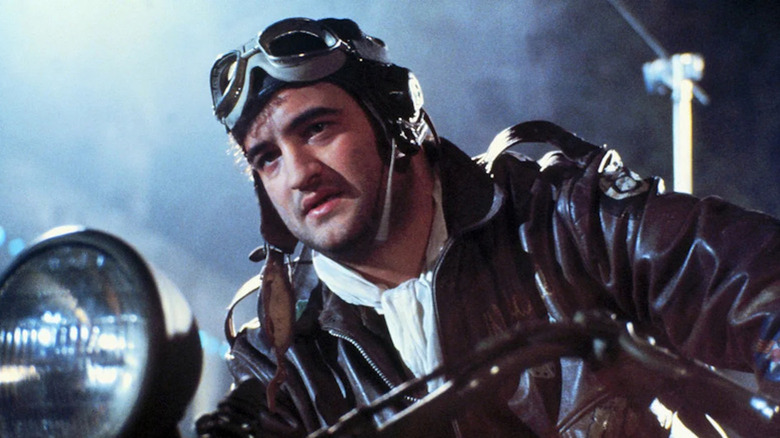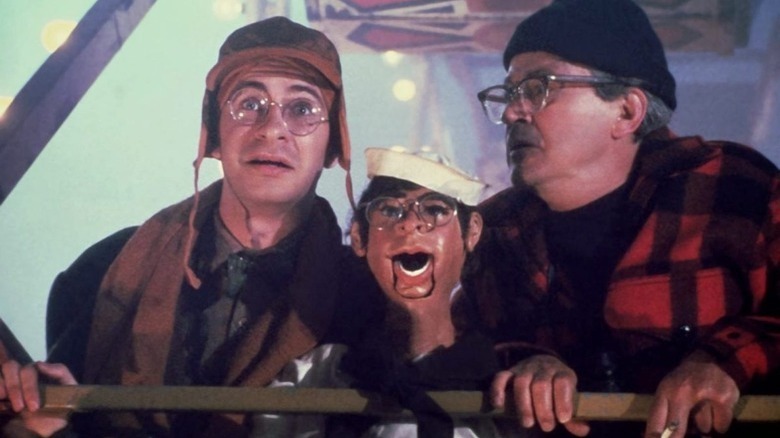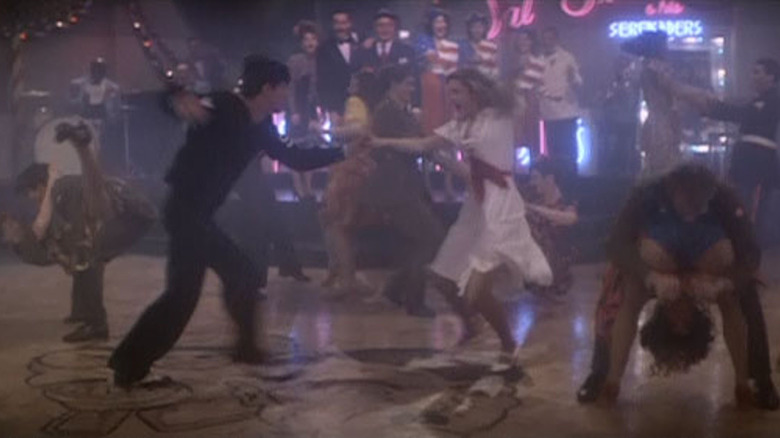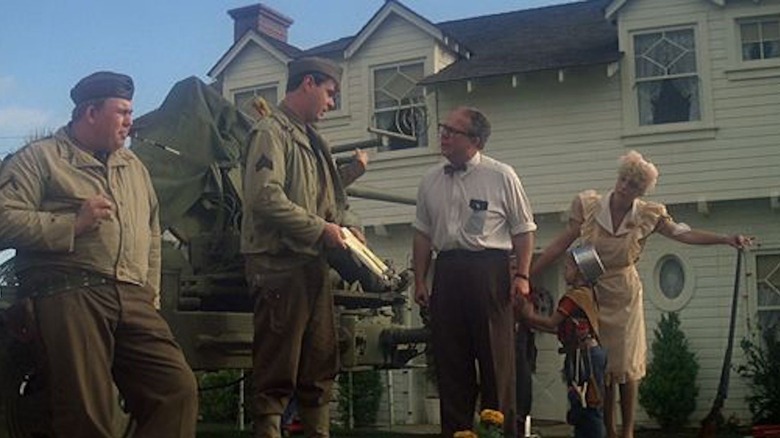This Steven Spielberg Directed-Critical Flop Is Actually A Chaotic Comedy Masterpiece
Steven Spielberg was playing with house money as he prepared to make his fifth feature. His previous two films, “Jaws” and “Close Encounters of the Third Kind,” had combined to gross the 2024 equivalent of $4.4 billion. He could’ve gotten a shot-for-shot remake of “Andrei Rublev” greenlit if he’d pressed the issue. He also could’ve hedged his bets and directed “Jaws 2.” Whatever he made next, he was going to make it wholly on his own terms.
Spielberg turned that house money into f***-you money, and shot an anarchic comedy that’s like watching the richest kid in town craft an immaculate model train set over the course of months, mainline Jolt Cola for a day, and lay complete and total waste to his creation in a shade under two hours.
“1941” is a madcap movie about reckless and irresponsible Americans who’ve gone wild over an impending Japanese sneak attack on the shores of California. Their fears are well founded, but their panic renders them a threat to their friends and neighbors — especially when one of them gets an anti-aircraft battery plopped on his front lawn (with hilariously precise instructions on how not to fire it). Eventually, a flare up of “war nerves” causes a conflagration over Hollywood Boulevard that rips like a wildfire out to Santa Monica, where an exchange of artillery puts a ferris wheel (and two watchmen) in the Pacific Ocean and leaves one house utterly destroyed.
Spielberg’s fifth film is often regarded as his first flop, but it grossed $95 million worldwide on a budget of $35 million (its $31 million domestic take could’ve been larger had Universal not opened it the same day as “The Jerk” at the height of Steve Martin’s popularity). It was, however, a miss with the nation’s critics, who were a little too eager to see filmdom’s wunderkind eat it.
The critics were unamused by 1941
In his one-and-a-half-star pan of “1941,” Roger Ebert wrote, “Everybody races around like people caught in a Jack Davis drawing for ‘Mad’ magazine.” That’s not a bad thing, Rog; it’s the film’s guiding virtue. Blockbuster-scale anarchy isn’t, in and of itself, necessarily funny (see John McTiernan’s clamorous chore that is “Last Action Hero”), but when unleashed in the service of an American wartime satire it feels entirely appropriate. Other critics like The New York Times’ Vincent Canby and The Washington Post’s Gary Arnold were harsher, the former calling Spielberg’s film “as much fun as a 40-pound wrist-watch (wristwatches are supposed to be fun?), while the latter condemned it as “an appalling waste of filmmaking and performance resources.” The New Yorker’s Pauline Kael was one of the few prominent voices in Spielberg’s corner, but she tempered her positive review by reportedly telling Spielberg, “You’re not going to get off easy; we’re waiting for you to fail.”
The most appropriate point of comparison for “1941” is Stanley Kramer’s “It’s a Mad, Mad, Mad, Mad World,” an epic, mean-spirited comedy about a bunch of regular people who go to extremes in their frantic pursuit of a hidden fortune. That movie’s gags are intentionally excessive (like Jonathan Winters destroying an entire filling station while trying to whup two of its pesky attendants), and you laugh at the extent to which Kramer goes for our amusement. Spielberg does that in “1941,” too, but I think his film’s most outraged critics thought, for example, he unmoored a ferris wheel and rolled it down a pier for real. As with most of the movie’s big scenes, that sequence was rendered via breathtakingly accurate miniatures.
Studio movies are often too expensive for a lot of ridiculous reasons, and this should be called out. But when a genius director like Spielberg is at the helm, you can expect that you’ll get a bang-and-a-half for your buck (provided that movie is not titled “Hook”). And on “1941,” he used his carte blanche budget to stage one dexterously-choreographed set piece after another. And now is the time to discuss the should-be-legendary USO musical number that descends into property-marring bedlam.
Steven Spielberg’s dazzling audition for West Side Story
I first saw “1941” when I was six years old, and it flooded my senses with pure, uncut cinema. I quickly became obsessed with it, and would drop everything to watch it when I ran across it on cable. Obviously, I loved the ferris wheel as well as Ward Douglas (Ned Beatty) reducing his house to rubble in a disastrously futile attempt to sink a Japanese sub that’s surfaced off the coast of Santa Monica, but the highlight was always the USO dance and everything that rumbles out of it after poor Wally Stephens (Bobby Di Cicco) gets walloped by Corporal Chuck Sitarski (Treat Williams) and, for extra concussive measure, the guy whose Navy uniform he stole.
For years, this sequence stood as the promise of a Spielberg musical yet to come. It was the reason some of us were so amped up for “West Side Story.” Once Wally arrives at the dance, he’s got to dance like a man possessed because he’s dodging the cement fists of Sitarski, who’s keen to make time with his partner Betty (Dianne Kay). So Wally basically has two partners throughout this set piece, and he’s frankly more spectacular when evading Sitarski. Spielberg shoots it all with a seamless mix of deft cutting (in tandem with his terrific editor Michael Kahn) and oners that are staged so fluidly you have to force yourself to look for them on repeat viewings. This isn’t look-at-me filmmaking; it’s a masterfully orchestrated feat of controlled chaos that finally bursts its seams and spills out into the crowd and onto the streets. It’s joyous, and I don’t understand how something this technically and emotionally dazzling routinely winds up near or at the bottom of Spielberg film rankings beneath largely leaden affairs like “The Lost World: Jurassic Park,” “The BFG” and, oh yes, “Hook.”
1941 is a timely panorama of an out-of-control America
The most troubling aspect of “1941” in the eyes of some detractors is that it too-giddily traffics in racial slurs and caricatures. Certainly, the repeated use of a certain epithet is difficult to stomach and not at all amusing, given that President Franklin D. Roosevelt would be signing Executive Order 9066 less than two months after the fictional events in the movie. People who merely looked Japanese were about to be rounded up, abused, and even killed in the United States.
“1941” doesn’t try to tackle this. It’s focused on the panic that would lead to such outrages, and makes it abundantly plain that everyone in this movie, save for Toshirô Mifune’s exasperated submarine commander, is some kind of American buffoon. The most dangerous of the lot is John Belushi’s Captain Wild Bill Kelso, a rogue drunk of an Air Force pilot who’s convinced the invading Japanese forces have already landed. He’s a conspiracy theorist, the Alex Jones of the skies, and he’s fixing to get a whole lot of innocent people killed while in pursuit of a fabricated menace.
Kelso is the dark heart of “1941,” a might-makes-right gun clown who’s got no time for reason and way too much ammunition. He’ll get us all killed, or, more likely, kill us in his drive to protect the country he allegedly loves. The world is at war in “1941,” and the country’s responsible citizens are enlisting or volunteering to do their part to save civilization. They don’t need the distraction of a bigot like Kelso, whose inebriated certitude could easily turn the country against itself. Years ago, we could laugh at his foolishness. Now that the country is run by a legion of Kelsos, “1941” is sadly one of the edgier films in Spielberg’s oeuvre and essential viewing. Just don’t make the mistake of watching the film’s 146-minute director’s cut. “1941” does everything it needs to do and more in its 118-minute theatrical iteration.


















Post Comment